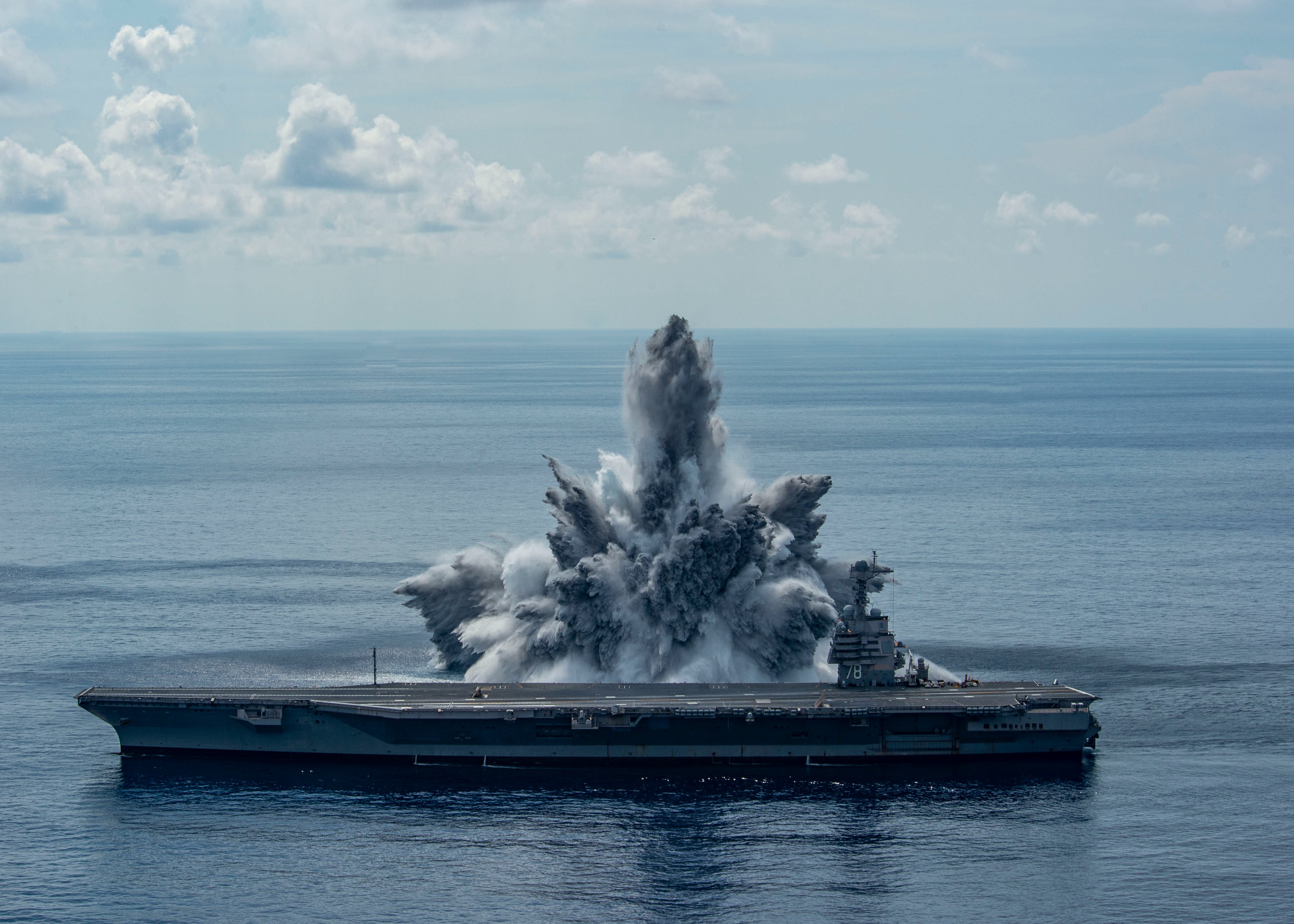The US Navy’s aircraft carrier, USS Gerald R. Ford (CVN-78), has completed its full ship shock trial or FSST testing off the coast of Florida. It seems the test was aimed at determining whether the carrier can withstand a possible Chinese or Russian missile attack.
Latest Pictures Of China’s Third Aircraft Carrier Display Its ‘Staggering Success’ To Challenge US Naval Might
It is considered one of the most severe tests a modern warship can face. The recently finished one was the last of 3 FSST tests and involved the controlled blasting of around 40,000 pounds of explosives in the water, near the ship’s hull. The impact of the ordnance used is roughly equivalent to an earthquake of magnitude 3.9.
This was done to gauge the ship’s ability to withstand combat conditions. The ship cleared this trial quite uneventfully.
Capt. Paul Lanzilotta, Ford’s commanding officer, told reporters that there were no catastrophic failures, fires, flooding, or anything of the like during the testing. In fact, within minutes of the explosions, helicopters were able to land on the deck of the carrier.
The previous two trials that happened in June and July, were cleared just as easily by the Ford. The FSST has shown the world that the ship is capable of withstanding shocks and functioning in extreme conditions.
In this episode of #ThisIsFordClass, Rear Adm. Greg Huffman, Commander, Carrier Strike Group TWELVE, gives an update on #Warship78's past, present, and future operations. #ForgedByTheSea #NavyReadiness #ExcellenceandOwnership pic.twitter.com/2Ox1j79iQq
— USS Gerald R. Ford (CVN 78) (@Warship_78) August 24, 2021
The US Navy had conducted similar exercises on USS Jackson and USS Milwaukee in 2016. The amphibious assault ship USS Wasp went through the tests in 1990 and the guided-missile cruiser USS Mobile Bay in 1987.
Besides testing this mighty water beast’s resilience, the exercises were supposed to provide the US Navy with crucial data to determine whether future Ford-class carriers will require any adjustments.
Currently, two additional Ford-class carriers — the USS John F. Kennedy (CVN-79) and USS Enterprise (CVN-80) — are under construction while two more have been ordered. The Ford-class is meant to replace the Nimitz-class carriers on a one-to-one basis beginning with CVN-79 by 2025.
Russian Thunder! Moscow Ready To Build ‘F-35 Stealth Fighter Jets’ For Turkey Using Technology From Su-57?
But another important task that the US Naval Force was probably looking to accomplish via the act of publishing these trials and revealing the results, was to send a signal to China.
The Asian giant is in possession of two indigenously developed anti-ship ballistic missiles- the DF-21D and the DF-26. Beijing has described both as “aircraft carrier killer(s)”. It reportedly struck moving targets that were thousands of kilometers away in the South China Sea last year.

Even Moscow has been conducting tests of its hypersonic anti-ship cruise missile, Tsirkon (Zircon). They have claimed that the missile can reach speeds up to Mach 9.
NASA Stars Testing All-Electric Aircraft Designed For Flying Taxi Service
But with the USS Ford clearing the tests with even less damage than expected, the impact that these missiles can have on the carrier is likely to be much more diminished. The US has not wasted any time in signaling this to both its adversaries.
However, threats from direct missile hits, or from electromagnetic pulse weapons that could be detonated mid-air still exist. The tests have only shown the resilience of the warship against water mines and nearby strikes. Still, even this kind of durability is nothing short of immensely impressive.
- Written by Shreya Mundhra/Eurasian Times Desk
- Follow EurAsian Times on Google News




